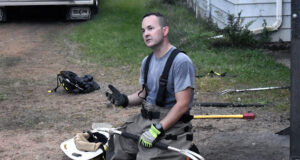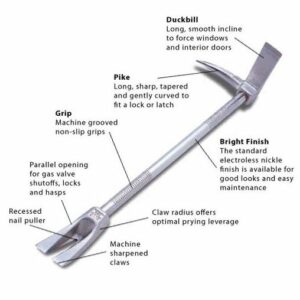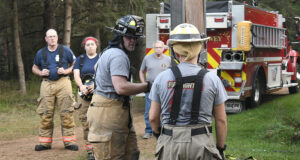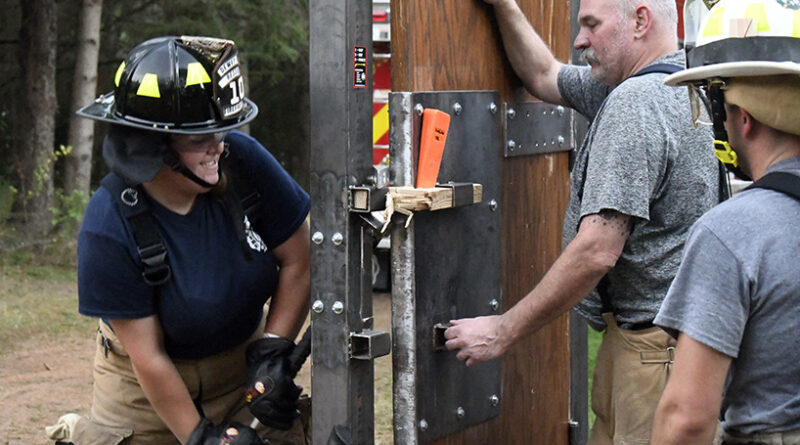Dewey firefighters practice forcible entry
By Brandi Makuski
A former Stevens Point firefighter returned to his old stomping grounds this week to provide a little training for brethren in Dewey.
David Briggs, 38, left the SPFD over a year ago but still works as a full-time firefighter in Central Wisconsin, mainly as a training officer. He said he launched his business, Firefighter Training, Development, and Coaching, on Sept. 1, 2021, and business is good.

“I never intended to run a business like this, or any other, but I was encouraged by other firefighters to do this,” Briggs said on Sept. 20, when he offered a training class on forcible entry to the Dewey Fire Department.
Drawing from his own experiences and those from other fire departments, Briggs customizes his training to specific departments or individuals. For DFD, his training focused on something the DFD doesn’t often encounter; a deadbolted, or otherwise blocked, door, behind which there might be a victim awaiting rescue during a fire.
The department trained at a vacant home at 5498 Golla Rd. in the Town of Hull. The property was donated for training use by a local family, according to Hull Fire Chief Ken Sadogierski, who added the house will eventually be torched to facilitate a training burn for local fire crews.
Briggs brought with him a steel door frame and planks of wood to slide through the slats of the door and frame, simulating the lock. One by one, Dewey firefighters forced their way through using a Halligan bar, axes, and other tools.

Local technical colleges offer firefighter training and certifications, and Briggs said he believes they “do a great job” and his training is meant to expand upon those programs.
“What I offer was made to provide reflexible training for the departments. My training is designed to meet very specific individual needs for different departments,” he said.
The idea is to fine-tune training beyond what’s included in typically structured classroom settings—and at affordable prices for departments limited by municipal budgets, he said. While tech schools and departments aren’t able to promote specific tool brands, Briggs can. When he’s able, he’ll even demonstrate how one brand might perform over another while on the scene of an emergency.
Riley Cate, one of the newest members of the DFD, tried her skills at cracking through a two-inch piece of treated wood that was simulating a deadbolt.
“Argh, this is hard,” she said, as she attempted to pry and twist the Halligan between the door and the jamb.
“It’s supposed to be,” Briggs quipped, then handed Cate an axe, demonstrating how to strike the tool with the flat-head axe and pry the door away from the frame. After several seconds, she succeeded, as the wood began to crack.

“That’s really what this is about,” Briggs told the group, about a dozen Dewey firefighters who attended the training. Dewey is a paid, on-call department comprised almost entirely of volunteers. “When you learn a new skill, you need to practice but it stays with you.”
Dewey Fire Chief Brian Lepper said his department trains weekly to keep their skills sharp. The department is part of the MABAS Division 110 system and has automatic aid agreements with other rural departments.

